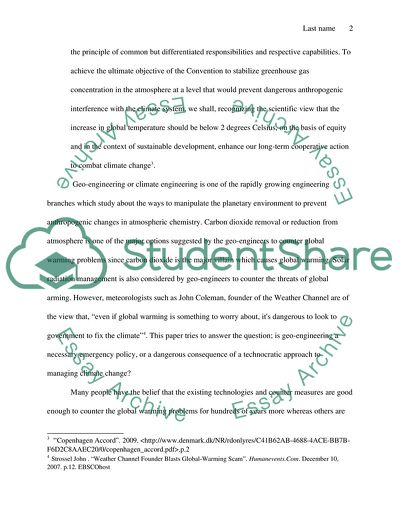Cite this document
(Geo-Engineering as a Technocratic Approach to Managing Climate Change Term Paper, n.d.)
Geo-Engineering as a Technocratic Approach to Managing Climate Change Term Paper. https://studentshare.org/environmental-studies/1769997-is-geo-engineering-a-necessary-emergency-policy-or-a-dangerous-consequence-of-a-technocratic-approach-to-managing-climate-change
Geo-Engineering as a Technocratic Approach to Managing Climate Change Term Paper. https://studentshare.org/environmental-studies/1769997-is-geo-engineering-a-necessary-emergency-policy-or-a-dangerous-consequence-of-a-technocratic-approach-to-managing-climate-change
(Geo-Engineering As a Technocratic Approach to Managing Climate Change Term Paper)
Geo-Engineering As a Technocratic Approach to Managing Climate Change Term Paper. https://studentshare.org/environmental-studies/1769997-is-geo-engineering-a-necessary-emergency-policy-or-a-dangerous-consequence-of-a-technocratic-approach-to-managing-climate-change.
Geo-Engineering As a Technocratic Approach to Managing Climate Change Term Paper. https://studentshare.org/environmental-studies/1769997-is-geo-engineering-a-necessary-emergency-policy-or-a-dangerous-consequence-of-a-technocratic-approach-to-managing-climate-change.
“Geo-Engineering As a Technocratic Approach to Managing Climate Change Term Paper”. https://studentshare.org/environmental-studies/1769997-is-geo-engineering-a-necessary-emergency-policy-or-a-dangerous-consequence-of-a-technocratic-approach-to-managing-climate-change.


